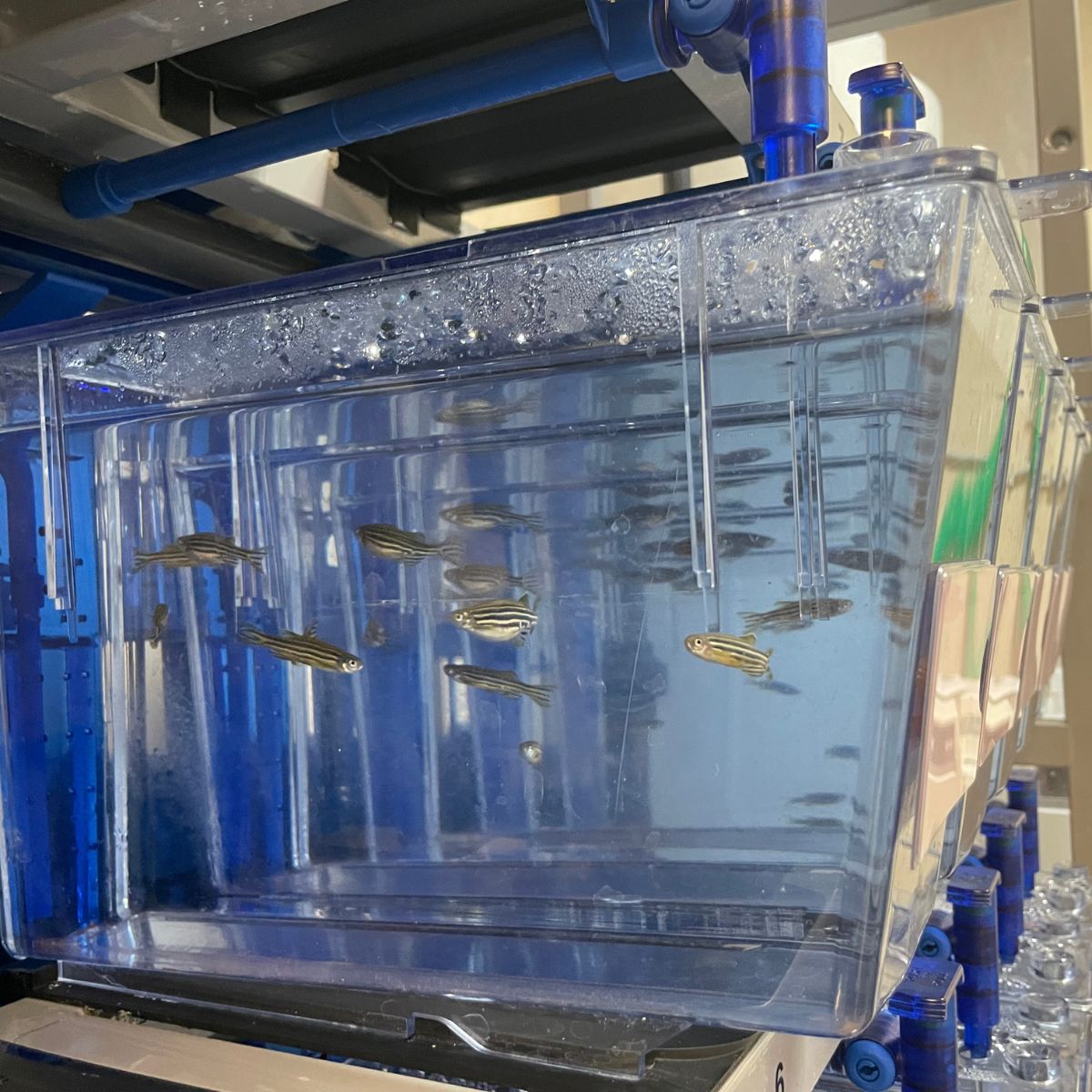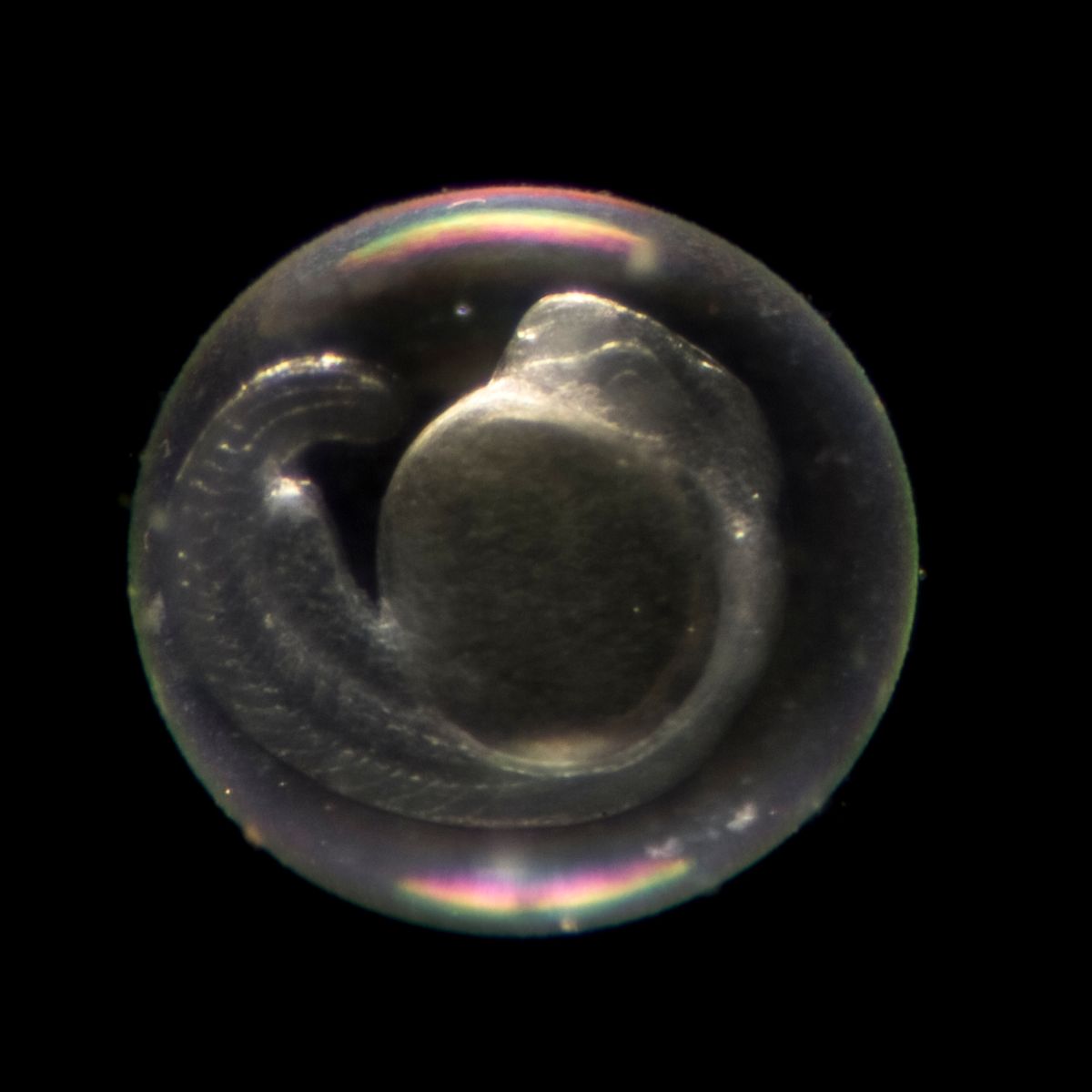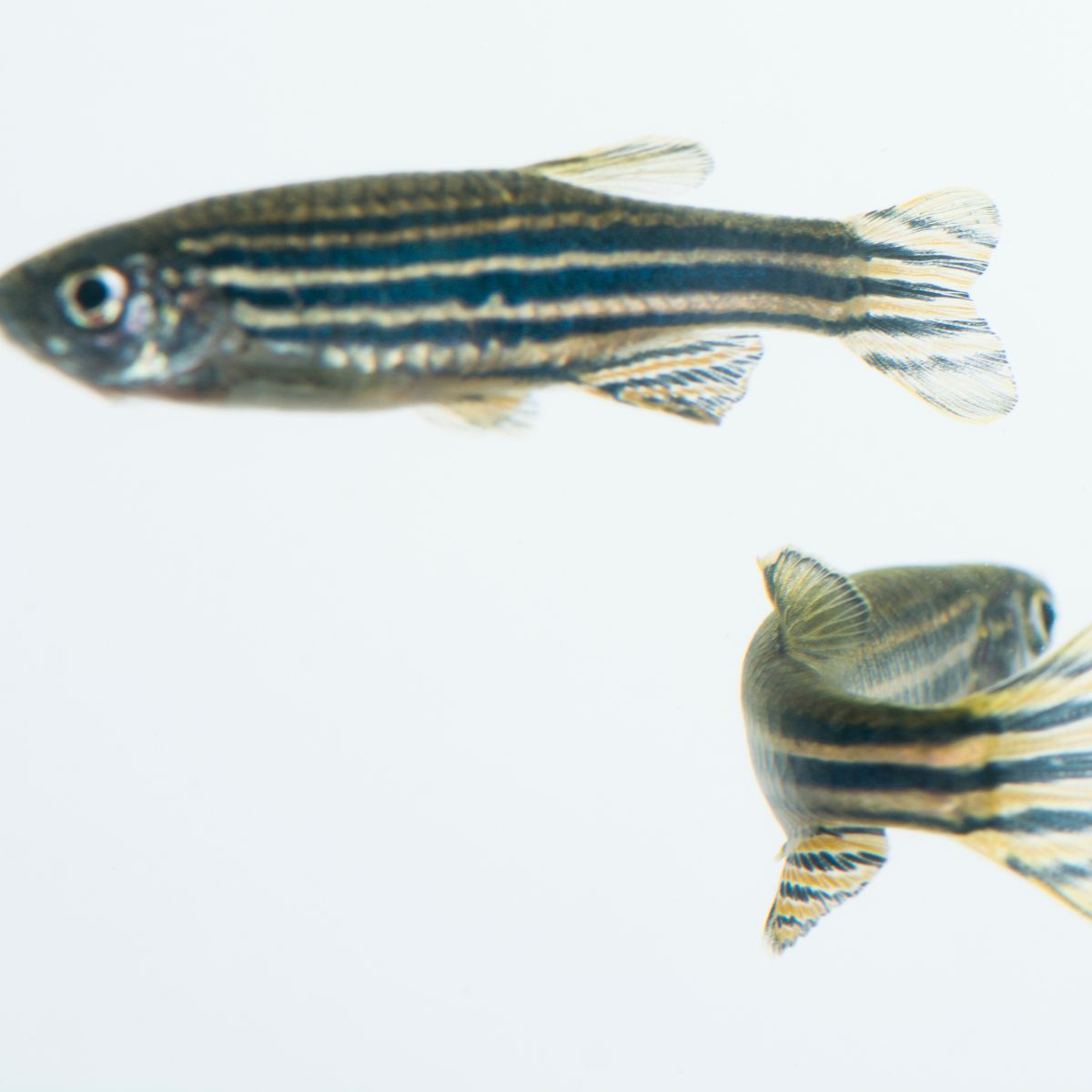The Zebrafish animal facility is authorised for breeding, use and supply services
The facility is equipped with a Stand-Alone multi-rack system.
It has a capacity of about 900 adult fish, distributed in 2 typologies of tanks on 5 different racks. The Stand-Alone is equipped with 1 filter, 1 silicone blower (which regulates filtered and treated water input – 10% daily replacement) and 1 syphon (which regulates water output and potential overflow).
The Stand-Alone is refilled with osmotized (treated) water via an external apparatus (reverse osmosis water system), and decontaminated/treated within the system itself by means of a drum filter net and a UV lamp.
The system is equipped with an automatic temperature monitoring, water conductivity maintenance using synthetic salts “Instant Ocean”, and a constant pH monitoring and maintenance through addition of sodium bicarbonate.
Services offered:
- Management of the entire breeding, maintenance and supply services
- Supervision, census, annotation and management of fish (livestock)
- Breeding of WT or Tg lines and screening of eggs by fluorescence stereomicroscope
- Genotyping
- Microinjections
- Technical-scientific experimental support
- Health monitoring according to FELASA guidelines
- Veterinary control and support
- Support for compiling Annex VI, OPBA evaluation, submission to the Ministry
ARE YOU HAVING TROUBLES GETTING YOUR MURINE MODEL RESEARCH PROJECT APPROVED? Try a Complementary Approach!
Try our pilot studies with the emerging animal model Zebrafish (Danio rerio). Experiments on larvae up to 5 days post fertilisation do not require authorizations*, as they are equivalent to an in vitro cell test, however zebrafish larvae allow for observations of biological processes with the complexity of a living organism!
(*European Parliament 2010/63/EU Directive on the protection of animals used for scientific purposes).
This will allow you to:
- get preliminary results that will show you the point of connection between data obtained from in vitro cell cultures and the murine model;
- reduce the number of animals used in later stages of the project, thanks to an upstream screening that will direct your studies;
- substitute, at least partially, the murine model with a lower encephalic neurophysiological development model in accordance with the principle of 3R **;
- facilitate the process of ministerial approval.
(**: LEGISLATIVE DECREE 4 March 2014, No. 26. Implementation of the 2010/63/UE Directive on the protection of animals used for scientific purposes.)
- Fish Embryo Acute Toxicity (FET) Test – n° 236 (26 July 2013)
- Fish, Short-term Toxicity Test on Embryo and Sac-Fry Stages – n° 212 (21 September 1998)
- Tap-Elicited Startle Reflex
- Conditioned Place Preference Test
- Diving Test
- Tap-Elicited Startle Reflex
- Conditioned Place Preference Test
- Bite Test
- Novel tank test
- Social test
- Light/dark test
- Fish, Early-life Stage Toxicity Test – n° 210 (26 July 2013)
- Fish Short Term Reproduction Assay – n° 229 (02 October 2012)
- Fish Sexual Development Test – n° 234 (28 July 2011)
- 21-day Fish Assay – n° 230 (8 September 2009)
- Fish, Juvenile Growth Test – n° 215 (21 January 2000)
- Fish, Acute Toxicity Test – n° 203 (17 July 1992)






